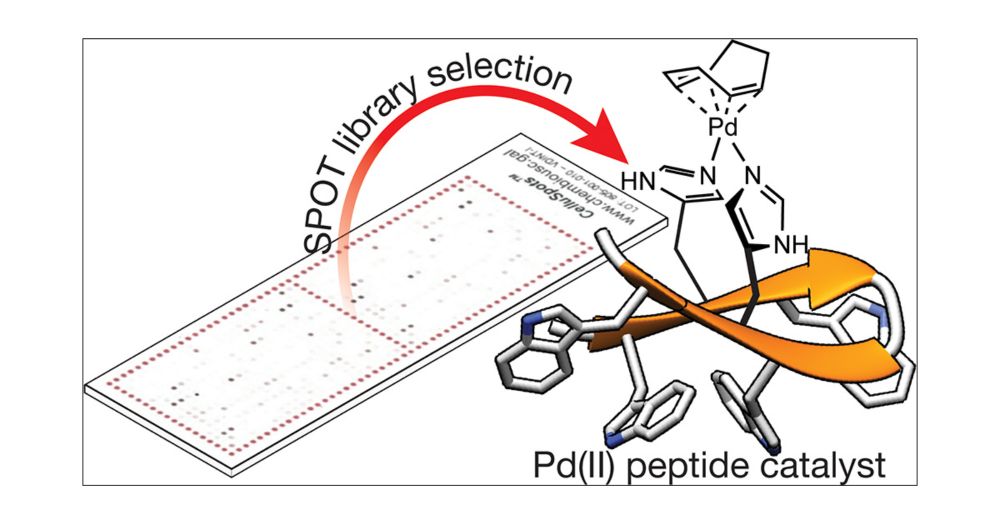
(Nano)cookies, anyone? 🍪 🍪 🍪 Check out our sweetest publication to date, in collaboration with Mark Rutland.
Alicia and Marine bake the smallest cookies you'll ever see. Ready to cellebrate Nanoscale Horizons @nanoscale-journals.rsc.org 10th anniversary. #openaccess
pubs.rsc.org/en/content/a...
16.10.2025 13:31 — 👍 11 🔁 4 💬 2 📌 0
MOFs!!!
08.10.2025 10:16 — 👍 4 🔁 0 💬 0 📌 0
Thank you for your dedication and your talent, Marina! And best of luck in your new endeavours, you'll do well wherever you go.
06.10.2025 08:10 — 👍 1 🔁 0 💬 0 📌 0

Chemistry, Chirality, and Complexity as Concepts in Single-Walled Carbon Nanotube Research
More than 30 years have elapsed since the description of single-walled carbon nanotubes (SWCNTs). Thirty years of intense research effort initially focused on elucidating the outstanding physical properties of SWCNTs, which gave rise to hopes for an immediate technological revolution. In parallel, advancements in synthesis and purification procedures afforded ever better samples of SWCNTs. A deeper understanding of the difficulties in exploiting the extraordinary intrinsic properties of SWCNTs and the advent of graphene marked the end of the hype. SWCNTs have now stepped out of the valley of disillusionment and are firmly climbing the slope of enlightenment. In this review, we highlight three broad concepts that we believe will permeate research in SWCNTs for the next few years: chemistry, chirality, and complexity. The quality of commercially available SWCNT samples, coupled with advances in characterization techniques, particularly microscopy, facilitates complex chemical derivatization of SWCNTs with reliable structural characterization. The endohedral modification of SWCNTs, inclusion of quantum defects, and synthesis of mechanically interlocked derivatives are illustrative examples. We also overview how enantiomeric resolution of SWCNTs enables new fields of research such as chiral sensing, catalysis, and spin filtering. Complexity, once seen as an enemy, now shows promise in several fields, as exemplified by physically unclonable functions and neuromorphic computing. These three axes, controlled chemical modification, chiral discrimination, and system-level complexity, are increasingly interwoven, defining an emerging research landscape for SWCNTs. Taken together, they offer a framework for reimagining the roles of SWCNTs in both fundamental science and technology. We hope this review inspires innovative research lines and encourages young scientists to focus on SWCNTs.
We have put together some ideas that we find exciting for the future of #SWCNT research: pubs.acs.org/doi/full/10.....
These three C's are all over our current lines of research. Our intention here is to communicate that excitement, share ideas, and hopefully inspire other groups as well.
30.09.2025 13:02 — 👍 11 🔁 3 💬 0 📌 0
"Los modelos de lenguaje no planifican; generan textos que parecen planes.
Los modelos de lenguaje no resuelven problemas; generan textos que parecen soluciones.
Los modelos de lenguaje no piensan; generan textos que parecen como si lo hicieran."
Andriy Burkov
28.07.2025 08:09 — 👍 36 🔁 13 💬 1 📌 1
Nanochemistry Camp 2025 | FONDAZIONE I.S.E.O. – ETS - Istituto di studi Economici e per l'Occupazione
Check out ITSEO's Nanochemistry Camp 2025:
www.istiseo.org/courses/nano...
What an absolute privelege to be part of such an outstanding line-up of speakers, including NP winner Morten Meldal!
Register for a Nanochemistry treat this autumn 🍁
18.07.2025 07:28 — 👍 2 🔁 0 💬 0 📌 0
Congratulations, Steve!
30.06.2025 21:34 — 👍 1 🔁 0 💬 0 📌 0

a cartoon of homer simpson sniffing something with his mouth open
ALT: a cartoon of homer simpson sniffing something with his mouth open
In this work, we build a room-temp electronic nose using MINT-based chemiresistors. It is selective, fast, and works with low power. It distinguishes vapors like NH₃, NO₂, acetone, and even breath-relevant mixtures like acetone/IPA/EtOH!!
I smell a bright future for MINTs in sensing!
3/3
23.06.2025 08:23 — 👍 1 🔁 0 💬 0 📌 0

Carbon Nanotube Chemical Sensors
Carbon nanotubes (CNTs) promise to advance a number of real-world technologies. Of these applications, they are particularly attractive for uses in chemical sensors for environmental and health monito...
SWNTs are great for sensing as they are literally all surface, so they are very responsive. As a downside of their extreme sensitivity, SWNT sensors are typically not very selective. pubs.acs.org/doi/10.1021/...
By making MINTs with the right design, the selectivity problem can be tackled.
2/3
23.06.2025 08:23 — 👍 0 🔁 0 💬 1 📌 0

Efficient Implementation of MINT-Based Chemiresistor Arrays for Artificial Olfaction
We demonstrate the possibility of using an array of MINT-based chemiresistors for the selective detection of VOCs at room temperature. Four new types of MINTs with different functional groups (MINTALKENE (X:–CH = CH2), MINTCOOMe (X:–COOMe), MINTCOOH (X:–COOH), and MINTOH (X:–CH2OH)) were specifically synthesized to prepare a set of six sensing layers, which included, in addition to the new MINTs, a pristine SWNTs layer and a MINTXYLENE layer. The functionalized sensing layers were tested by exposing them to NH3, NO2, EtOH, IPA, acetone, benzene, and NaClO vapors in the ppm range. We showed that MINT functionalization enhances response to analytes with respect to pristine SWNTs. When assembled into an array, our sensing layers can operate at room temperature as an electronic nose, disclosing the possibility of using these layers in low-power-consumption wearable devices. Correlation plots, PCA, and UMAP analysis show that a remarkable discrimination of ammonia with respect to interfering gases can be reached by the e-nose. Gas mixtures were also discriminated, as shown for NH3/ethanol, acetone/ethanol, and isopropanol/acetone mixtures, which are relevant in view of breathomics applications. The efficient preparation method of sensing layers allows for an improvement of performance, as shown for one of the best performing chemiresistors in the set, resulting in a sensitivity increase (up to 10×) and a dramatic reduction of response and recovery times.
🔊 Just out in @jacs.acspublications.org! The results of a fruitful collaboration with the group of L. Sangaletti at Università Cattolica del Sacro Cuore.
MINTs sniff out VOCs 👃
pubs.acs.org/doi/full/10....
1/3
23.06.2025 08:23 — 👍 7 🔁 1 💬 1 📌 0
Have you bought your seat for Mars yet?
19.06.2025 11:11 — 👍 31 🔁 5 💬 6 📌 1

Hey @ISMSC2025 attendees, have you met Louis?
If you want to hear about helical foldamers that form homo- and heteroduplexes through complementary interactions, go talk to him! :-)
By the way, Louis will defend his PhD dissertation at the end of October... just saying!
28.05.2025 08:49 — 👍 3 🔁 1 💬 0 📌 0

Ultrashort Carbon Nanotubes with Luminescent Color Centers Are Bright NIR-II Nanoemitters
In the fields of bioimaging, photonics, and quantum science, it is equally crucial to combine high brightness with a nanoscale size in short-wave infrared (SWIR) emitters. However, such nanoemitters a...
🔥 Our latest research on ultrashort carbon nanotubes (uCCNTs) with luminescent color centers has been published in ACS Nano! We've discovered that these uCCNTs are exceptionally bright in the NIRII window, making them ideal for advanced bioimaging, photonics, and quantum science applications.
22.05.2025 11:50 — 👍 4 🔁 1 💬 1 📌 1

The invited speaker line-up for POLYMAT Spotlight 2026 is now complete!
📅 29 June – 2 July, 2026 | 🌐#POLYMATsptl
🔗 polymat-spotlight.eu
21.05.2025 08:35 — 👍 9 🔁 6 💬 0 📌 0
👏👏👏 Bravo chicas!!!
www.rtve.es/deportes/202...
11.05.2025 16:30 — 👍 3 🔁 0 💬 0 📌 0
I wish...
04.04.2025 13:58 — 👍 0 🔁 0 💬 0 📌 0

a cartoon character is asking the question why .
ALT: a cartoon character is asking the question why .
Receives paper for refereeing with figures at the end of the manuscript.
04.04.2025 13:20 — 👍 8 🔁 0 💬 2 📌 0
Congratulations to @ciqus.bsky.social, excellent choice! And best of luck to @diegopena.bsky.social 👏👏👏
19.03.2025 08:45 — 👍 8 🔁 0 💬 0 📌 0
Enhorabuena, Eugenio!!
12.03.2025 12:54 — 👍 2 🔁 0 💬 0 📌 0

Sin las mujeres, la ciencia pierde un valor esencial para avanzar.
IMDEA Nanociencia destaca el trabajo de las mujeres en la investigación a través de diversas iniciativas.
Consulta más sobre Perspectiva de Género en Investigación en: www.nanociencia.imdea.org/es/projects-... #8M
07.03.2025 08:58 — 👍 16 🔁 7 💬 0 📌 1
Assistant Professor @ University of Wyoming
Supramolecular Chemistry | Polymer Chemistry
Dynamic catalysis and nonequilibrium chemistry.
Postdoc Toste Group at UC Berkeley, PhD Leigh Group at UoM.
Professor of Chemistry at Trinity College Dublin, The University of Dublin. Research Group: https://thorrigunnlaugsson.wordpress.com
Father of two teenagers and lover of food and cooking!
The nanoscale journal family, from the @roysocchem.bsky.social Nanoscale Horizons, Nanoscale, and Nanoscale Advances (open access).
🌐 Website: rsc.li/nanoscale-journals Published by @rsc.org
Research group of the Institute of Organic Chemistry
@univienna - https://mateoslab.com
Sociedad creada con el objetivo de fomentar la investigación, transferencia y divulgación de la Nanomedicina en España
Organization created with the aim of promoting research, transfer, and dissemination of Nanomedicine in Spain
Chemist and Senior Scientist @ Berkeley Lab. Entrepreneur @ Sepion Technologies & Cyklos Materials. Dog dad to Abraham, the Frenchie.
PhD student @MPI Science of Light
Docente-Investigador en la universidad pública (UPCT). IP del grupo @multimat.bsky.social.
Tenured Senior Scientist of Spanish National Research Council at The Aragón Nanoscience and Materials Institute (INMA-CSIC/UNIZAR)
Women In #Supramolecular #Chemistry is an international network creating a sense of kinship and providing support for women. In doing so, we aim to support the retention and career progression of women of all career stages within our community.
#ChemSky
Professor of Nanooptical Imaging at FAU Erlangen-Nuremberg/CITABLE, Associated Group Leader at the MPI for the Science of Light. Glycobiology, optics, philosophy, and music.
Posts by Division of Synthesis of Macromolecules @mpip-mainz.mpg.de | JACS Associate Editor
Striving for equality, diversity and representation in all aspects.
https://www.mpip-mainz.mpg.de/en/weil
Professor. Institute for Molecular Science, NINS, Japan. Molecular Motors.
Lab: https://groups.ims.ac.jp/organization/iino_g/index.html
Google Scholar: https://scholar.google.jp/citations?hl=en&user=_4_iGHcAAAAJ
YouTube: https://www.youtube.com/@IINOG_IMS
I love mixing things.
Ramón y Cajal fellow at CICAUDC at UDC
Co-leading NanoSelfLab
Member of yacadeuro
Molecular Self-assembly and Nanomaterials Lab, from University of Coruña.
La RSEQ es una sociedad, declarada de utilidad pública, que tiene por objeto promover, desarrollar y divulgar la disciplina de la Química, tanto en su aspecto de ciencia pura como en el de sus aplicaciones, en todo el ámbito del estado español.
Supramolecular and Physical Organic Chemist. Professor of Organic Chemistry, University of Oxford


















